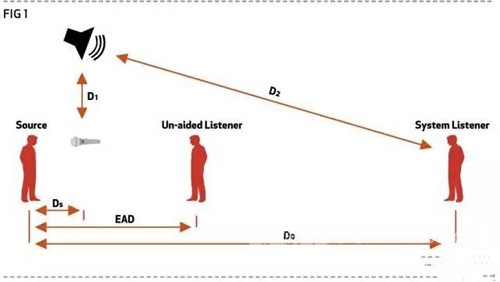There are only three types of sound reinforcement systems: 1) Let the distant audience hear the same volume as the nearby audience (rather than louder) 2) Enhance the artistic effect (common purpose in the performance) 3) Let the different areas Audience hears the voice (public address system)
First, the concept
There are only three uses for sound reinforcement systems:
1) Let the distant audience hear the same volume as the nearby audience (rather than louder)
2) Enhancement of artistic effects (common purposes in theatrical performances)
3) Let the audience in different areas hear the sound (public address system)
Second, the design
Obviously we are going to discuss the first use, as shown in the figure:

Source: source (here refers to the speaker)
Un-aided Listener: Unassisted (audio) listener (refers to the audience who do not need auxiliary sound reinforcement at close range)
System Listener: System listener (refers to the audience who need to assist the sound reinforcement at a distance)
Ds: the distance from the source to the microphone
EAD: equivalent acoustic distance
D0: source to system listener distance
D1: speaker to microphone distance
D2: Speaker to system listener distance
Our aim is to make System
Listener hears with Un-aided
Listener sounds at the same volume (not louder).
Reasons for acoustic feedback:
The sound source generates a sound pressure level at the microphone. During the sound reinforcement process, the speaker also produces a sound pressure level at the microphone. When the sound pressure level is greater than or equal to the sound pressure level of the sound source at the microphone, an acoustic feedback is generated. .
Based on the above information, we can list an equation to help determine the design of the system:
Set Un-aided
Listener and System
The sound pressure level at the Listener is X (according to concept 1)
The difference between the sound pressure level from the sound source to the microphone and the sound pressure level from the microphone to the Un-aided Listener is: 20log (EAD/DS)
The difference between the sound pressure level from the speaker to the microphone and the sound pressure level from the speaker to the System Listener is: 20Log (D2/D1)
The number of microphones is Nom, and the calculation factor is 10LogNom.
Pre-feedback margin (6-10dB), expressed as FSM
List the equations based on feedback reasons:
X+20log(EAD/Ds)≥X+20log(D2/D1)+10logNom+FSM
=X+20logEAD-20logDs≥X+20logD2-20logD1+10logNom+FSM
=X+20logEAD-20logDS-X-20logD2+20logD1-10logNom-FSM≥0
=20logEAD+20logD1-20logD2-20LogDs-10logNom-FSM≥0
Bring EAD, D1, D2, Ds, number of microphones (Nom) and pre-feedback margin (FSM)
20logEAD+20logD1-20logD2-20LogDs-10logNom-FSM≥0
Adjust each design parameter so that the result ≥ 0
Which is the most welcome kid laptop for entertainment and online learning? 10.1 inch laptop is the best choice. You can see netbook 10.1 inch with android os, 10.1 inch windows laptop, mini laptop 10.1 inch 2 in 1 windows, 10.1 inch 2 In 1 Laptop with android os. Of course, there are various matches of memory and storage, 2 32GB or 4 64GB. Our suggestion is that 10.1 inch android 32GB laptop, 10.1inch 32GB or 64GB Solid State Drive windows laptop. Except 10.1 inch Student Laptop , there are 11 Inch Laptop, 15.6 Inch Laptop, 14 Inch Laptop , also option here.
Besides, other advantages you can see on 10.1inch Budget Laptop For Students, for example, lightweight, competitive cost, portability, Android or Windows OS, rich slots, energy saving cpu, etc.
As a professional manufacturer, can provide free custom service, like mark client`s logo on laptop cover, opening system, inner color box, manual, boot. Produce as your special requirement on parameters, preinstall apps needed, etc. What you need to do is very simple, confirming PI, including price, delivery time, parameters, etc.
10.1 Inch Laptop,Netbook 10.1 Inch,10.1 Inch 2 In 1 Laptop,10.1 Inch Windows Laptop,Mini Laptop 10.1 Inch
Henan Shuyi Electronics Co., Ltd. , https://www.shuyielectronictech.com
